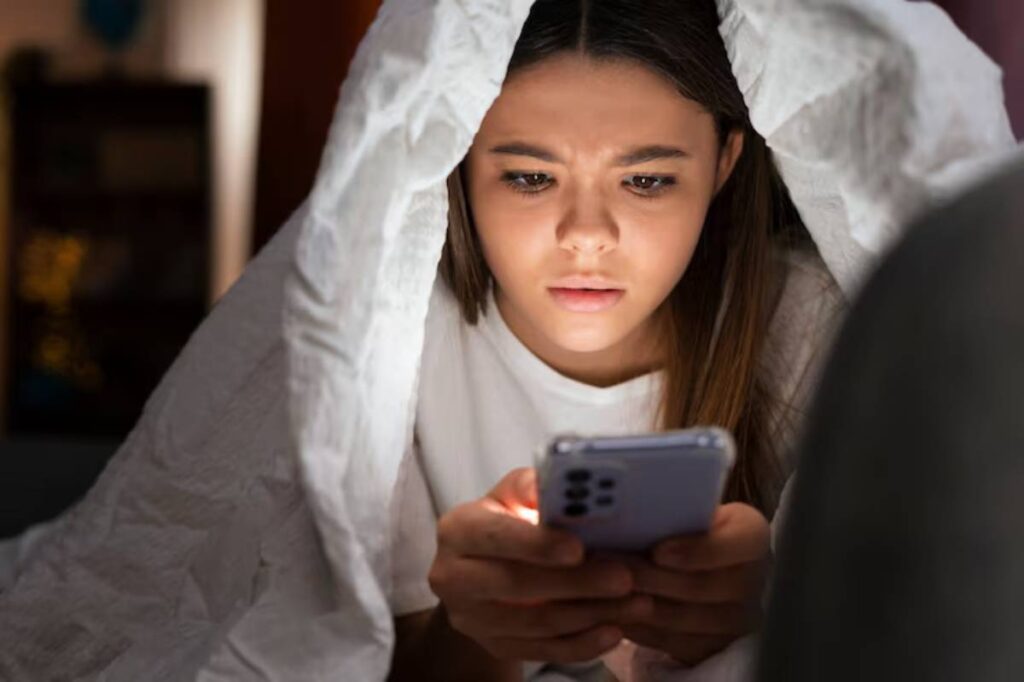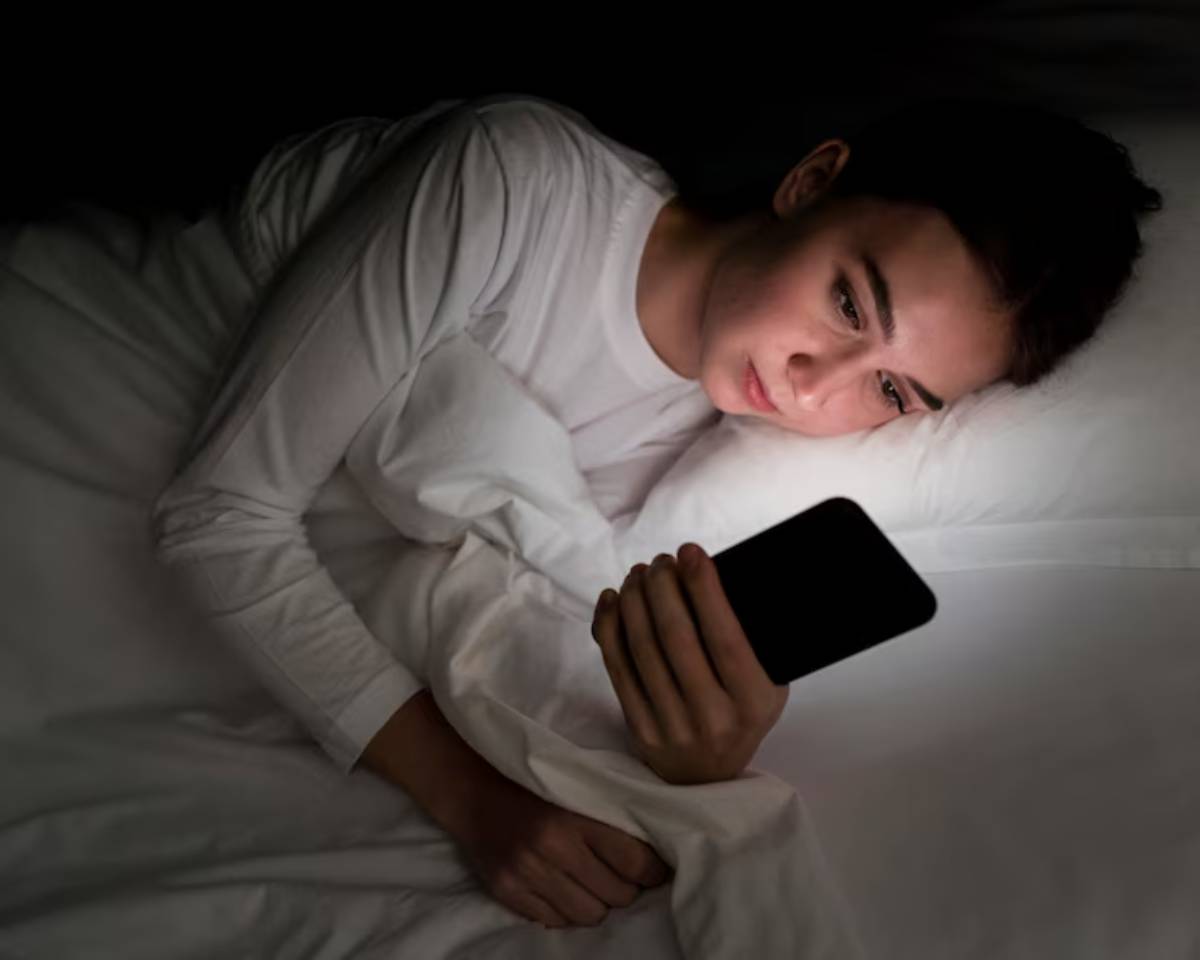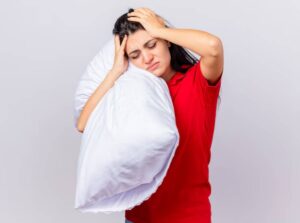The Health Blog

The Importance of Limiting Screen Time Before Bed
The clock says bedtime. The lights are dimmed. But somehow, the glow of a screen keeps calling. Maybe it’s a phone. Maybe a tablet. Perhaps it’s a final scroll through social media or one last episode of a show. Minutes turn into an hour. And sleep? It gets pushed further and further away.
This is the modern sleep struggle — overstimulation from screens right when the body should be winding down. And while it might seem harmless, this habit can seriously disrupt rest.
Understanding the link between screen time and sleep is key to improving the way we rest, recharge, and wake up feeling human again.
Why Screens Disrupt Sleep So Much

At the centre of the problem is light — not just any light, but the bright, blue-toned light emitted from screens. This type of light tells the brain it’s daytime, even when it’s pitch-black outside.
Melatonin, the hormone responsible for making the body feel sleepy, works best in darkness. When blue light floods the eyes, melatonin gets delayed. That means it takes longer to fall asleep, sleep isn’t as deep, and waking up is harder.
And it’s not just about light. Screen content itself keeps the brain alert. News, emails, social feeds — they all keep the mind active, when it should be quieting down.
The Mental Stimulation Trap
Even calming content can cause trouble. A relaxing video or an uplifting story might feel like the perfect bedtime treat. But every notification, vibration, or new post triggers micro-stress. The nervous system stays on high alert, ready to respond — not rest.
This overstimulation doesn’t just make it harder to fall asleep. It also affects the quality of sleep. People may fall asleep eventually, but they wake up feeling unrefreshed, foggy, or drained. The cycle continues night after night.
A Digital Detox for Sleep: What It Really Means

The phrase “digital detox” might sound extreme, like throwing all electronics into the sea. Thankfully, that’s not necessary.
A digital detox for sleep simply means creating some space between screen use and bedtime. That space might be 30 minutes. It could be an hour. The goal is to allow the brain and body to unwind without bright lights or constant input.
In this calm window of time, natural sleepiness has room to return. The body begins producing melatonin again. The mind slows its pace. And a restful night becomes far more likely.
Real Sleep Hygiene Practices That Make a Difference
Improving sleep doesn’t require an entire lifestyle overhaul. Often, small changes have the biggest impact. Consider these simple, effective sleep hygiene practices to reduce screen time and prepare for rest:
1. Set a Screen Curfew
Choose a time each night to put screens away. An hour before bed is ideal, but even 30 minutes can help.
2. Create a Bedtime Ritual
Replace screens with a calming habit. Reading a book, stretching, journaling, or sipping herbal tea can all help signal to the body that it’s time to wind down.
3. Use “Night Mode” or Blue Light Filters
If avoiding screens isn’t possible, switch devices to night mode in the evening. While not perfect, this reduces blue light exposure.
4. Keep Phones Out of the Bedroom
Charging devices outside the bedroom removes the temptation to check them. This also helps associate the bedroom with sleep, not scrolling.
5. Dim the Lights
Soft lighting helps the body transition to rest. Use lamps instead of overhead lights during the wind-down period.
What Can Replace the Screen at Night?

This is often the biggest hurdle — figuring out what to do instead of staring at a screen. Here are a few suggestions that don’t require digital input:
- Reading (a real book or magazine, not an e-reader with backlight)
- Breathwork or meditation
- Gentle stretching or yoga
- Listening to calming music or nature sounds
- Sketching, colouring, or light journaling
These quiet activities help regulate the nervous system and support natural sleep rhythms.
Rewiring the Brain for Better Sleep
One of the most overlooked facts about sleep is this: it’s a skill. And like any skill, it can be improved with consistent practice.
When screens are removed from the end of the day, the brain starts to relearn how to slow down. It may take time, and at first, it might feel unfamiliar — even uncomfortable. But over time, the body remembers how to wind down naturally.
This shift isn’t just about falling asleep faster. It’s about sleeping more deeply, waking up less often, and feeling more refreshed in the morning.
For Parents, Students, and Night Owls Alike
This isn’t a message only for insomniacs or wellness enthusiasts. Whether it’s a student doing last-minute assignments, a parent catching up on TV, or a shift worker trying to unwind, screen time can easily creep into late hours.
But anyone — regardless of schedule — can benefit from a screen buffer before sleep. The body responds to rhythm, not perfection. A regular pattern of rest, even if unconventional, helps stabilise energy, mood, and focus.
No Shame, No Guilt — Just Awareness
Changing a bedtime habit can be tough. Screens are convenient, comforting, and entertaining. It’s not about blaming or guilt-tripping. It’s about noticing what habits might be getting in the way of better sleep and gently adjusting them.
Some nights won’t go to plan. That’s okay. The aim is progress, not perfection. One night of improved sleep can make a real difference. And that one night can lead to another.
What Sleep Could Feel Like — With Fewer Screens
Imagine a night where the mind doesn’t race. Where sleep arrives naturally, not as a fight. Where the next morning begins with calm energy, not caffeine-fuelled panic.
That kind of rest is possible. And the path to it might be simpler than expected — starting with turning off the screen.
A Suggested Wind-Down Routine Without Screens
Try this gentle 45-minute routine to ease into better sleep:
- 45 mins before bed: Turn off all screens. Dim the lights. Put the phone on “Do Not Disturb.”
- 40 mins before bed: Make a warm herbal tea or glass of water. Begin a quiet activity.
- 30 mins before bed: Read a few pages from a book. No thrillers — something calm or familiar.
- 20 mins before bed: Do a short stretch or breathing exercise. Focus on slowing down the breath.
- 10 mins before bed: Wash up, brush teeth, prepare the sleep space.
- At bedtime: Lie down without pressure to fall asleep. Let rest come naturally.
In Closing: Why It’s Worth It
Limiting screen time before bed may seem like a small change. But it can have a big impact. The connection between screen time and sleep is well-documented, and the benefits of even a mild digital detox for sleep are hard to ignore.
By taking a step back from constant input and embracing more mindful sleep hygiene practices, anyone can support better rest — not just occasionally, but consistently.
And in a world where stress is high and rest is rare, that’s something worth prioritising.









